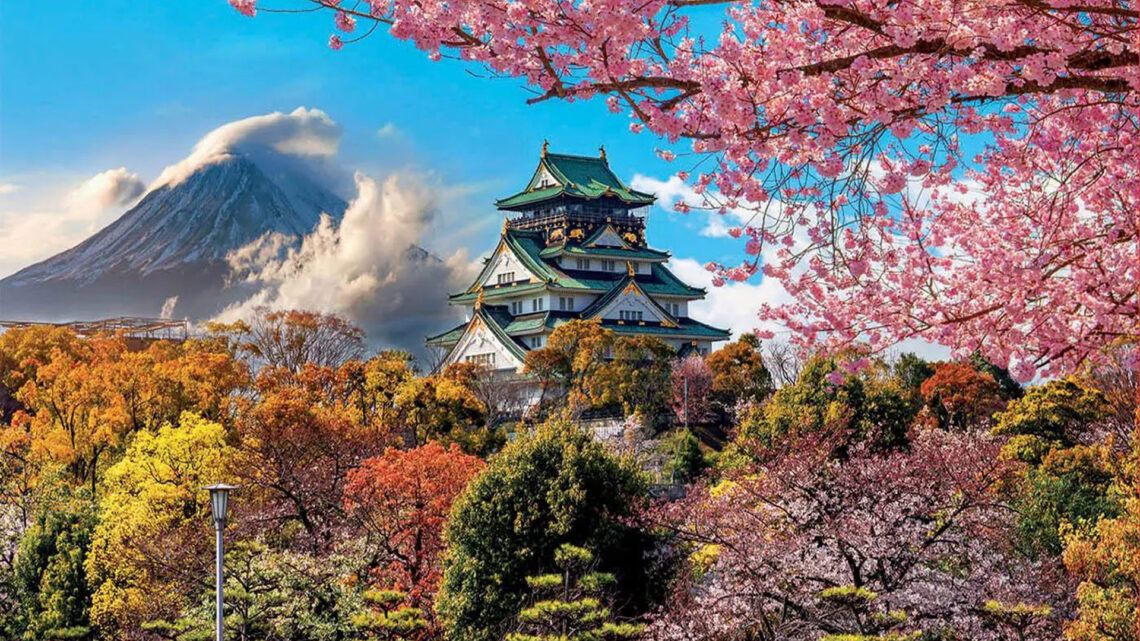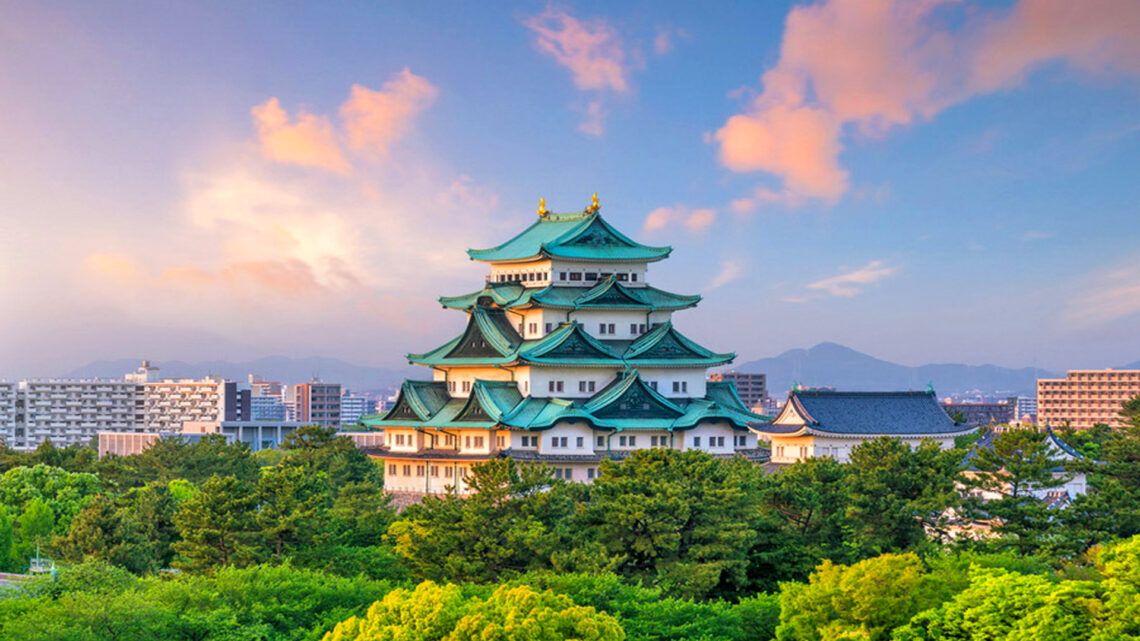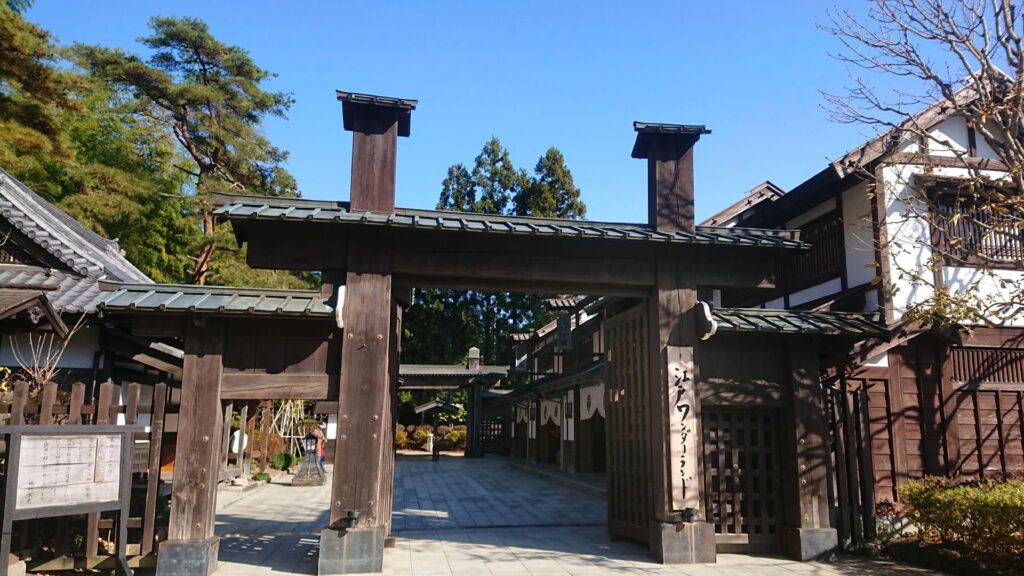
Edo-Mura: A Time Travel into Old Japan
In this series, I want to take you on a journey into the fascinating world of Japanese open-air museums. We begin with Edo-Mura, also known as Edo Wonderland, a vibrant open-air museum that uniquely brings to life the era of old Japan. Nestled in the idyllic landscape of the beautiful mountains of Nikko, you will find authentic replicas of traditional buildings reflecting the everyday life, culture, and art of the Edo period.
Edo-Mura, translated as “Edo Village,” has been meticulously created to give visitors a glimpse into Japan from the 17th to the 19th centuries. The Edo period, also known as the Tokugawa era, was a time of peace, cultural flourishing, and societal change, shaping Japan’s culture and lifestyle to this day.
The architecture of Edo-Mura is a true masterpiece. Upon entering the village, you’ll be captivated by the magnificent construction of traditional Japanese houses. The wooden structures, covered with thatch, convey the charm and elegance of this bygone era. Stroll through narrow lanes and admire the intricate details of temples and shrines, carefully recreated to capture the atmosphere of the Edo period.
Experience how people lived during this time by stepping into lovingly replicated houses. In the tea houses, you can partake in the delicate nuances of the traditional tea ceremony, while craft workshops provide insight into the craftsmanship of that era. From the blacksmith crafting intricate katana swords to the traditional potter creating beautiful ceramics with a steady hand, every artisan in Edo-Mura contributes to keeping the history of this era alive.
The Edo period was a golden age for arts and entertainment. In Edo-Mura, you can participate in performances of traditional music, dance, and theater. The vibrant costumes and graceful movements of the artists transport you to a world where art and culture played a central role in societal life.
The journey through time wouldn’t be complete without a culinary stop. In the traditional inns of Edo-Mura, you can taste authentic dishes prepared according to ancient recipes. From delicate sushi to hearty ramen, each dish is a feast for the senses, reviving the flavors of the Edo period.
But Edo-Mura is more than just an open-air museum; it is a time travel experience that engages all your senses. The attention to detail in the reconstructions makes this place a living history book. Immerse yourself in the fascinating world of the Edo period and be enchanted by its beauty, art, and culture. Edo-Mura is not just a place; it’s an experience that stimulates your imagination and enriches you with a deeper understanding of Japan’s history. Embark on the journey and experience the magic of Edo-Mura—where the past comes alive.
The Historical Architecture in Edo-Mura
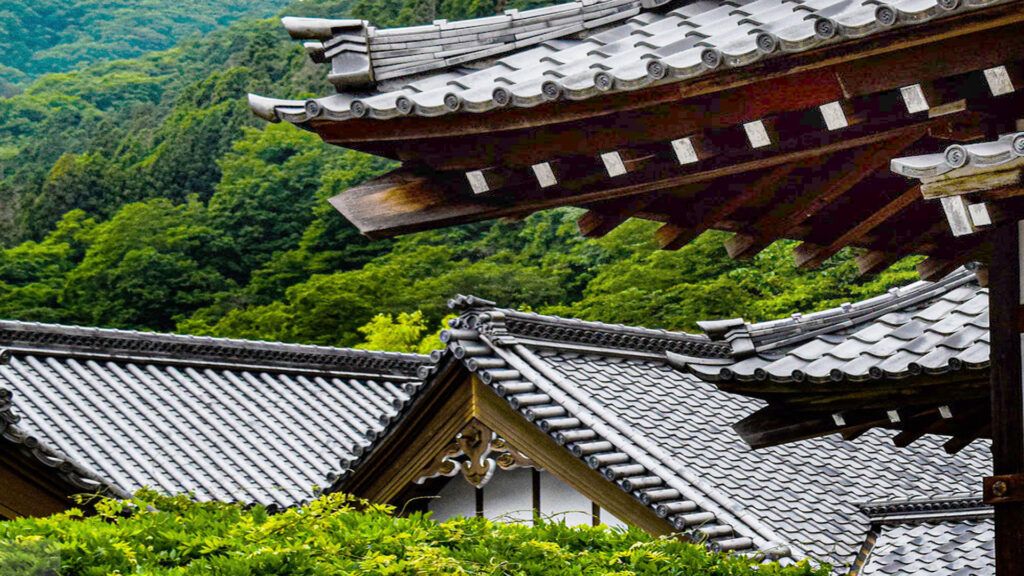
The rich historical architecture of Edo-Mura takes us on a journey through time. The unique architectural masterpieces of this historic village transport visitors back to the Edo period, reflecting the craftsmanship and cultural refinement of that era. A notable example of traditional construction is the magnificent Samurai Quarter, where faithful reconstructions of Samurai residences, complete with meticulous details, preserve the atmosphere of this bygone era.
The Samurai residences stand out for their impressive wooden architecture, providing not only aesthetic appeal but also a profound insight into the social structures and lifestyles of the Samurai class. Each exhibit and detail has been faithfully reproduced from ancient originals, offering an authentic glimpse into the heyday of Japanese culture. The use of sliding doors, tatami mats, and intricately crafted wood carvings lends these residences a timeless elegance.
Another gem in Edo-Mura is the Geisha District, bringing to life the sophisticated world of Geishas and Oirans. The tea houses and entertainment venues in this quarter are masterpieces of wood architecture, offering a glimpse into the cultural zenith of that time. The artistic wood embellishments and tasteful arrangement of spaces testify to a deep understanding of aesthetics and elegance.
Beyond residential areas, Edo-Mura boasts impressive examples of public architecture. The temple area serves as a place for spiritual reflection, reflecting the religious beliefs of the Edo period. The magnificent pagodas and shrines are not only architectural masterpieces but also symbols of the faith and spirituality of that era.
The streets of Edo-Mura are lined with craft shops and stores recreating the vibrant life of that era. Carefully reconstructed shops provide insight into the craftsmanship and trade of the Edo period. From traditional textiles to handmade artworks and culinary delights, visitors can enjoy a variety of authentic experiences.
The bridges of Edo-Mura are not just simple crossings; they are true architectural wonders. The intricately designed wooden structures are not only functional but also aesthetically pleasing. These bridges connect not only different parts of the village but also symbolize the connection between past and present.
In conclusion, Edo-Mura offers a fascinating journey through the historical architecture of Japan. The careful reconstruction and preservation of these buildings allow visitors to immerse themselves in the past and experience the beauty and cultural depth of the Edo period. Edo-Mura is not just a museum but a living testament to the craftsmanship and cultural diversity that shaped that era.
If you find yourself in Japan, a visit to this small piece of historical Japan in Edo-Mura is a must. It’s a journey that not only touches the heart but also provides a deep insight into the rich history of Japan.
Historical Events in Edo-Mura
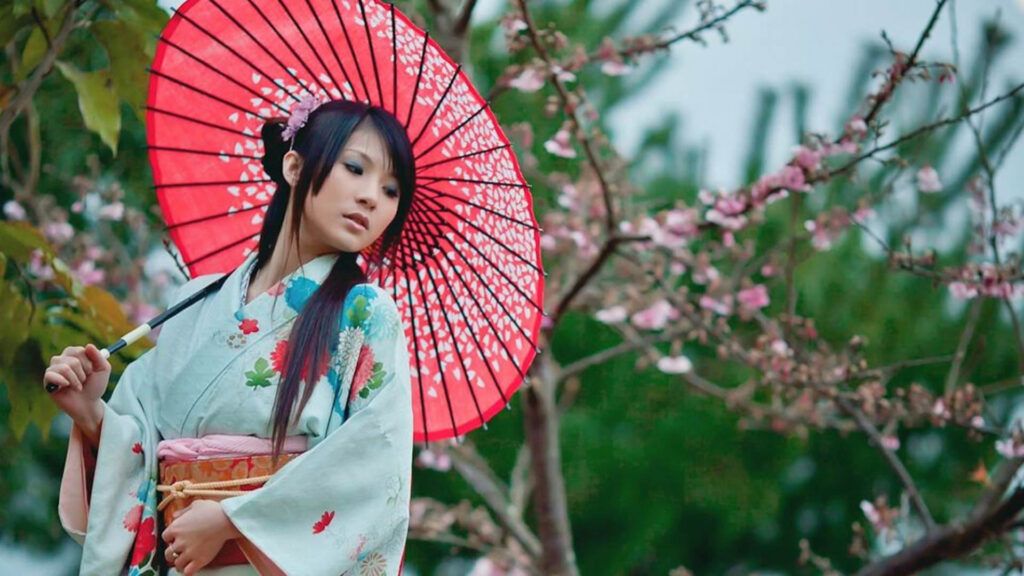
Edo-Mura attracts not only history enthusiasts but also adventurers and culture enthusiasts alike. In this unique village, the ancient Edo era comes to life, and its events and festivals are more than just a collection of activities – they are a celebration for the senses.
The Magic of Hanami
The Edo-Mura Cherry Blossom Festival is undoubtedly one of the most breathtaking events of the year. When the delicate blossoms adorn the ancient trees of the village, the entire surroundings transform into a pastel-colored fairy tale. Visitors can participate in guided walks accompanied by knowledgeable guides to experience the beauty of cherry blossoms in their full glory. Culinary delights and traditional music complete the experience, and the atmosphere is permeated by the sounds of Koto and Shakuhachi.
Getting Lost in the Summer Festival: Edo-Matsuri
With summer comes the vibrant Edo-Matsuri, a colorful festival that fills the streets with elaborate processions, traditional dances, and cheerful sounds. Kimonos and Yukatas are ubiquitous, and visitors are invited to immerse themselves in this festive occasion. Local craftsmen proudly showcase their handicrafts, and food stalls offer a variety of treats, from Takoyaki to cool matcha ice cream.
Autumnal Reflections: Momiji Matsuri
As the leaves in autumn turn warm shades of red, Edo-Mura celebrates the Momiji Matsuri. This festival not only honors nature but also the art of the traditional tea ceremony. In the ancient tea houses, visitors can experience the tranquility of this centuries-old practice, accompanied by the melody of falling leaves and the scent of fresh matcha.
Winter Wonderland: Yuki Matsuri
When the first snow falls, Edo-Mura becomes a winter wonderland. The Yuki Matsuri captivates with intricate snow sculptures created by talented local artists. Lanterns illuminate the snow-covered paths, and traditional storytellers captivate young and old with ancient legends by crackling fires.
Aside from seasonal festivals, Edo-Mura offers a variety of courses and workshops throughout the year. From the art of paper folding (Origami) to the elegant tea ceremony, visitors can actively immerse themselves in the rich culture. These activities are guided by experienced teachers who enthusiastically share their knowledge.
In Edo-Mura, history is not only preserved but also experienced. Each event, festival, and course contributes to preserving the essence of traditional Japan while creating space for modern interpretations. A visit to this unique village is not just a journey through time but also a celebration of cultural diversity and vibrant traditions.
Immerse yourself in the fascinating world of the Edo period, brought to life in Edo-Mura. From traditional theater to art demonstrations and breathtaking performances, Edo-Mura offers a wide range of events that captivate visitors of all ages.
Kabuki Theater: The Art of Masks and Gestures
Edo-Mura takes pride in offering authentic Kabuki theater, a traditional form of Japanese drama. The intricate masks and precise gestures of the actors transport the audience into a world full of emotions and stories. The Kabuki theater in Edo-Mura is not just a performance but an immersive experience that transports you to the Edo era.
Ninja Demonstrations: Shadow Warriors in Action
Experience the mysterious world of ninjas in action-packed demonstrations. From acrobatic stunts to impressive martial arts, ninja performers showcase their incredible skills. Exciting stories unfold as the ninjas demonstrate the art of camouflage and deception crucial during the Edo period.
Traditional Music and Dance: The Sound of Bygone Days
The sounds of shamisen, taiko drums, and traditional dances fill the air in Edo-Mura. Embark on a musical journey reflecting the beauty and elegance of the Edo era. The artists transport you to another time with their masterful performances, allowing you to experience traditional Japanese culture in all its splendor.
Geisha Performances: Elegance and Grace on Stage
Edo-Mura’s geishas enchant the audience with their elegant performances. Their artful movements, traditional kimonos, and the characteristic white makeup immerse visitors in the world of geisha art. These performances reflect the finesse that made geishas icons of beauty and entertainment during the Edo era.
Samurai Battles: The Struggle for Honor and Loyalty
The stage becomes the setting for epic samurai battles, where Edo-era warriors showcase their skills in handling katanas and bows. Choreographed to the smallest detail, these performances allow the audience to experience the spirit of the samurai. A spectacular spectacle that takes your breath away and brings the history of these fearless warriors to life.
Craftsmanship Up Close: Workshops and Demonstrations
There’s much to discover not only on stage but also in the world of traditional craftsmanship in Edo-Mura. Participate in workshops where you can learn kimono-making techniques or explore the art of the tea ceremony. These interactive experiences let you firsthand experience the craftsmanship of the Edo era.
Festivals and Celebrations: The Vibrant Culture of Edo
Edo-Mura regularly celebrates traditional festivals and events that reflect the lively culture of the Edo era. From colorful parades to lively dances, each festival provides a unique opportunity to immerse yourself in the festive atmosphere of this bygone era. Visitors can not only watch but actively participate in the festivities, feeling the joy of the Edo residents.
Whether you’re a history enthusiast, art lover, or adventurer, Edo-Mura offers a diverse spectrum of shows and activities that not only entertain but also deeply immerse you in the world of the Edo era. Dive into this unique time in Japan and experience the magic of days gone by amid the historical Edo-Mura.
Historical Craftmanship in Edo-Mura
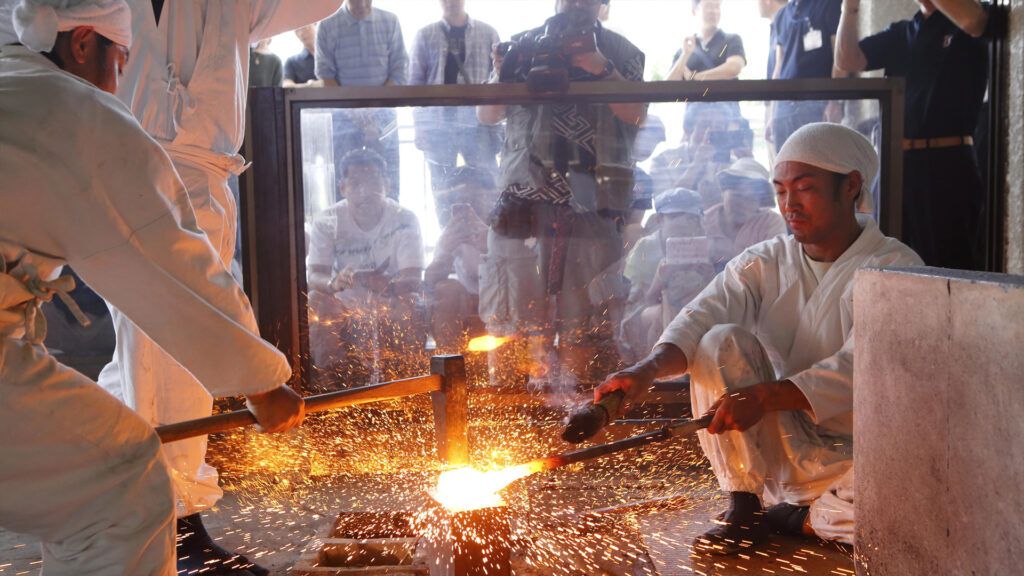
Welcome to Edo-Mura, a vibrant testament to times gone by, where historical craftsmanship is experienced in its purest form. The craftsmanship of the Edo period takes us back to the roots of traditional skills that still shape Japan’s culture today.
The Edo period, also known as the Tokugawa era, spanned from 1603 to 1868, marking an era of peace and stability in Japan. In Edo-Mura, an open-air museum on the outskirts of Tokyo, the atmosphere of this historical period comes to life. Visitors here have the unique opportunity to immerse themselves in the world of historical craftsmanship and witness masters at work.
Undoubtedly, a highlight in Edo-Mura is the ancient art of blacksmithing. Clad in traditional kimonos, the blacksmiths use techniques passed down through generations to create breathtaking katanas and armor. The art of swordsmithing in Edo-Mura is not just a craft; it is a cultural tradition that captures the essence of the samurai era.
The intricate weaving of kimonos is another impressive craft presented here. In a meticulous process, silk threads are expertly woven into colorful patterns and designs. The looms clatter rhythmically as artisans showcase their skills, creating timeless masterpieces that represent the elegance and sophistication of the Edo era.
In addition to textile design, Edo-Mura also features a fascinating demonstration of ceramic craftsmanship. Potters, practicing their art with a calm reminiscent of that era, shape clay into intricate tea bowls and vases. The use of traditional kilns gives the ceramic pieces a unique texture and coloration, perfectly capturing the spirit of the Edo era.
The art of traditional woodblock printing, also known as Ukiyo-e, is another gem in the crown of historical craftsmanship in Edo-Mura. Artists carve precise designs into wooden blocks, then use vibrant colors on traditional paper to create impressive prints. These artistic works tell stories from the past while expressing the creativity and craftsmanship of the artists.
The streets of Edo-Mura are lined with small workshops where traditional craftsmen demonstrate their skills. From the production of bamboo products to the art of papermaking and the creation of traditional jewelry – every facet of historical craftsmanship comes to life here.
In Edo-Mura, the past merges with the present, and visitors have the unique opportunity not only to witness historical craftsmanship but also to actively participate. In workshops, they can get hands-on experience and, under the guidance of experienced craftsmen, create their own works of art.
Preserving and passing on these traditional crafts is not just a tribute to Japan’s history but also a living experience for the senses. Edo-Mura is more than just an open-air museum – it is a gateway to the fascinating world of historical craftsmanship rooted in the Edo period, shining in all its splendor today. Immerse yourself in this journey through time and be enchanted by the beauty and finesse of a bygone era.
Is Edo-Mura more than a Japanese Disneyland?
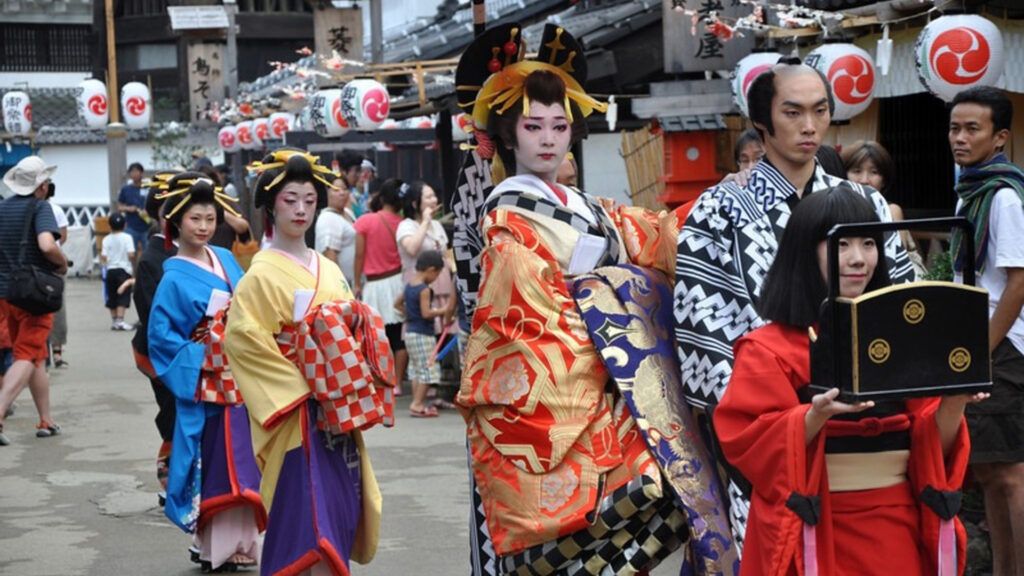
From me, there is a clear yes. Edo-Mura is a fascinating destination in Japan that may appear at first glance like a magical place from a bygone era. However, the question remains: Is Edo-Mura more than just a Japanese Disneyland? To answer this question, let’s delve into the rich history and unique atmosphere of this special place.
Edo-Mura, also known as Edo Wonderland, is located in Nikko, Tochigi, and is a vibrant reconstruction of the Edo period, an era in Japanese history that lasted from 1603 to 1868. What sets Edo-Mura apart is that it’s not merely a replica but also a living theater where visitors can immerse themselves in the past.
The architecture of Edo-Mura reflects the aesthetics and style of the Edo period. From traditional wooden houses to magnificent temples, each structure provides insight into the craftsmanship and way of life of that era. The carefully crafted environment allows visitors to step into a world shaped by samurai, geishas, and craftsmen.
However, Edo-Mura is more than just a silent backdrop of days gone by. The village’s residents, all dressed in period attire, play active roles and interact with visitors. This gives Edo-Mura a unique liveliness that goes beyond what one might expect from conventional historical reconstructions.
The heart of Edo-Mura is its immersive theater, which transports visitors into the daily life of the Edo era. Here, guests can experience traditional craftsmanship, enjoy samurai sword fights, or participate in theater performances showcasing the cultural diversity of this fascinating time.
However, the comparison to a “Japanese Disneyland” is not entirely unfounded. Edo-Mura is a popular tourist destination catering to the needs of visitors. Souvenir shops, restaurants, and entertainment options are plentiful. This may lead some critics to view Edo-Mura as too commercial.
Nevertheless, this aspect does not diminish the cultural significance of Edo-Mura. The careful reconstruction and efforts to maintain historical accuracy deserve recognition. The place not only offers an entertaining experience but also an educational journey into the past.
In conclusion, Edo-Mura is more than just a Japanese Disneyland. It is a fascinating blend of history, culture, and entertainment that appeals to visitors of all ages. The lively portrayal of the Edo era, coupled with modern comforts, makes this place a unique destination that provides not only entertainment but also education.
In my next post, we will delve into the various activities and attractions of Edo-Mura to gain a deeper understanding of this fascinating historical village. So stay tuned and join me in exploring the world of Edo-Mura.
As a continuation, let’s explore some of the specific activities and attractions in Edo-Mura:
Edo-Mura, as a living reconstruction of the Edo period, offers visitors not only a visual journey back in time but also the opportunity to actively participate in cultural heritage. The architecture, authentic down to the smallest detail, serves as a backdrop for a captivating play where visitors themselves are the main actors.
The streets of Edo-Mura pulse with activity. Craftsmen in traditional attire showcase their art, whether it’s the crafting of handmade pottery or the artistic forging of Katana swords. These interactions allow visitors not only to observe but also to get hands-on and learn the skills of times past.
The samurai, a symbol of the Edo era, take visitors on a journey into the world of sword fights. These performances are not only spectacularly staged but also provide insight into the values and code of conduct of this fascinating warrior class. Guests can even participate in workshops to learn the basics of sword fighting.
Not to be forgotten are the geishas, strolling through the streets in elegant kimonos. Their grace and traditional performances lend Edo-Mura a romantic atmosphere. Visitors have the opportunity to have tea with a geisha and learn more about the secrets of this mysterious world.
The theater performances in Edo-Mura are a highlight of the visit. From traditional Kabuki performances to humorous comedies, these productions offer a versatile insight into Japan’s cultural heritage. Visitors can not only watch but also actively participate, gaining a deeper understanding of the diversity of the Edo era.
Despite these fascinating activities, souvenir shops and restaurants catering to tourists’ needs are present, as is common in such places worldwide. Nevertheless, I don’t get the impression that the historical aspect is neglected in favor of business sense. Ultimately, it is up to you, the visitors, to consciously engage in the cultural experiences that Edo-Mura has to offer.
Your Hermann Candahashi


